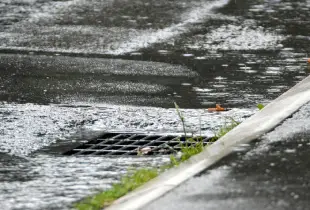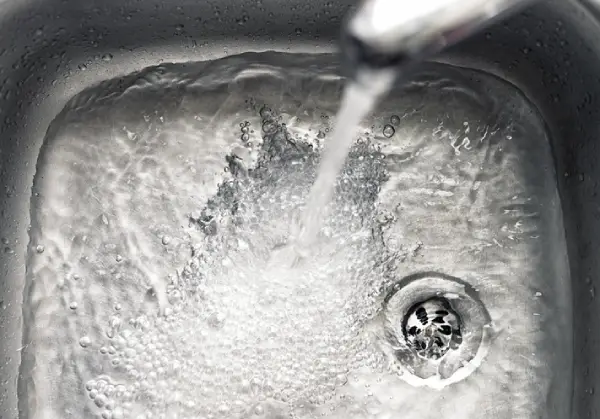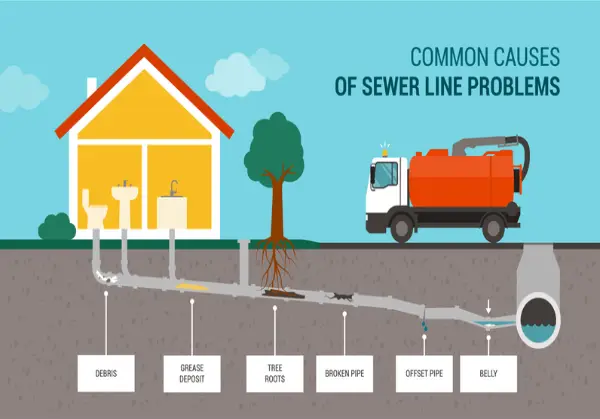Sure, you’ve heard of storm drains, sewer drains, all sorts of drains. They carry water, so what’s the difference? It’s common to not know the major differences between the two and even mix the terms up. While being confusing, mistaking the two terms can lead to toxic hazards and damaging effects on the environment, which is why we’re here to share everything you need to know about both types of drains.
What are Storm Drains?

Separate but just as important as sewer drains, storm drains carry rainwater and runoff from roads into nearby creeks, rivers, and the ocean. You can often find them built into curbs, alleys, and parking lots. Without storm drains, it would not take much rainfall or snow melt to create a flood.
The water within storm drains is meant only for wastewater that will go untreated, not designed to carry any sewage or hazardous contaminants since the water is routed directly to other bodies of water from the drain. That’s why it’s crucial not to dump anything into storm drains – trash, paint, solvent, etc. You’re risking the health of wildlife if so.
Why Doesn’t Storm System Water Get Treated?
You might think that if sewer drains are already meant for routing water to a plant for treatment, why not do the same thing with rainwater? It’s a good question. The two systems are separated intentionally because water treatment plants would not be able to handle the significant amount of water and would cause backflows of hazardous water.
Keeping two separate systems helps to reduce the number of street floods from severe weather. It’s the same reason that sump pumps in basements or lower crawl spaces should route to storm drains instead of sanitary drains.
What are Sewer Drains?

Sewer drains, or sanitary systems, are intended to carry sewage away from bathrooms, sinks, kitchens, etc. to a wastewater treatment plant. At this plant, the wastewater is filtered, treated, and discharged. In Charleston, this water comes from homes and businesses, traveling more than 800 miles through sewer lines to get to Plum Island Wastewater Treatment Plant. Any harmful pollutants or microorganisms are removed before this cleaned water is routed into Charleston Harbor. Wastewater treatment services are designed for public health and environmental protection.
How Do Sewer Drain Lines Stop Working?
When pipes clog in the home, it can be a frustrating inconvenience. Hopefully, it’s a minor repair that you can stay ahead of, but sometimes these situations become more severe. If the problem is with the main sewer line, it quickly becomes an emergency that should be addressed immediately.
You might start to notice water backing up randomly in drains throughout the home, for example, flushing the toilet suddenly leads to water backing up into the bathtub. The main sewer line is one line responsible for carrying out water from every drain in your home, which means if it’s just one drain that’s clogging you can likely find simpler solutions.
The problem with the solutions you’ll find at hardware stores is that they tend to contain toxic chemicals that end up causing more damage to your drains and sewer lines – and you don’t want to use them improperly since they’re hazardous to your health.
Some of the common causes of the larger, more imminent sewer line clogs include:
- Broken or collapsed pipes
- Grease buildup collecting debris
- Corrosion and rust
- Tree root growth
- Mud, branches, and leaves
If it’s a blockage in the main line, your standard solutions won’t reach deep enough, and it could become dangerous to your home and health if left for too long.

Tips for Handling Main Sewer Line Blockages
Even though you won’t be able to inspect or clear the main line without professional equipment and training, if you’re in the midst of a sewer main line issue, there are steps you can take to minimize damage.
Clean What You Can
Wearing protective gloves and any other gear you might have, you can clean up water that’s backed up a bit and make sure to keep everyone else away from the area.
Leave the Drain Cleaner Alone
As we mentioned, standard solutions can end up causing the problem to worsen, potentially eating through older pipes in an attempt to clear them.
Shut the Water Off
A quick and easy step to take to prevent more water from backing up into your house is to shut the water source off while you wait for professional services. There will be residual water still lingering in the pipes, but nothing new will gather up to follow, and plumbers can get to work quickly to start the recovery process.
Our team is here to help with any advice or repairs for storm and sewer drains. Contact us today to get started.

